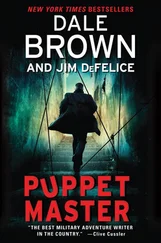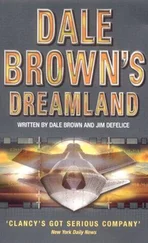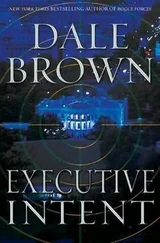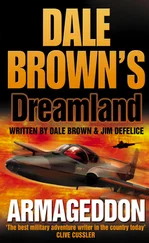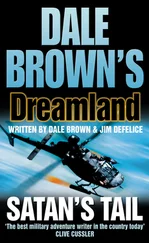“That’s his target—it’s got to be,” Jason said. “We’ve got to deploy the task force out there and hunt this guy down.”
“We’ve got the FBI, customs, Coast Guard, the National Guard, and every state and local law-enforcement agency within a hundred miles of San Francisco on the alert and after him,” Kelsey said. “We’re setting up surveillance on every possible target. What is the task force supposed to do that they can’t?”
“Kelsey, you’re acting as if this guy is just some sort of common criminal,” Jason said. “He’s a psycho with knowledge and probably access to military weapons, including nuclear weapons. You don’t fight him with guys with a pistol and a badge—you fight him with superior firepower. You can’t go out there expecting to apprehend him—you’ve got to go in expecting to hunt him down, battle it out, and kill the sonofabitch.”
“And what makes you such an expert, Major—the outstanding job you did down in Brazil?” Kelsey asked irritably. “Listen, Jason, we’ve got folks on the case who figured this stuff out a long time ago and they’ve been on the move and setting up ever since…”
“Oh, really? How long have you known about this, Special Agent DeLaine?”
“…and Task Force TALON is alive in name only,” she went on. “Let the professionals handle it.”
“Zakharov brought six squads of paramilitary troops, antitank weapons, and a helicopter gunship, all led by a former Russian commando, just to nab one guy—if he’s going to attack a heavily armed target in the heart of a major city in America, he’s going to bring a lot more firepower than that,” Jason said. “He’ll be no match for the police department.” He turned to Jefferson. “Ray, we’ve got to find a way to get out of here,” he said. “Who else can you talk to besides Chamberlain? How about Secretary of Defense Collier?”
“I can try to contact him through friends of mine in the Pentagon,” Jefferson said. This time, there was no argument about trusting Chamberlain—he knew something was wrong. “I’m friends with the command sergeant major working in the office of the director of the Joint Staffs. He might be able to get a word to the SECDEF.” He pulled out his secure cellular phone and dialed. After a few moments, he closed the phone, and for the second time Jason saw a very uncommon sight—a confused look on his face. “You’re not going to believe this, sir,” he said. “We’ve just been ordered to prepare to deploy—the entire task force. A C-17’s on the way to pick us up.”
“Where are we going?” Jason asked—but when he saw Jefferson’s face, he knew instantly: “You’re shitting me: San Francisco?”
“I shit you not, sir. San Francisco. They’re calling it a ‘security assessment’ for…”
“For TransGlobal Energy,” Jason said. “Did they plant listening devices on us, or what? Let’s get back to the training area, Sergeant Major. Let’s go, folks.”
“What if they’re wrong about San Francisco?” Kelsey asked as they started jogging back to base. “Zakharov could be anywhere.”
“I don’t think he’d fly into San Jose and then risk flying somewhere else to do whatever he means to do,” Jason said. “Whatever he’s doing back in the States, he’s going to do in the San Francisco Bay area.”
“It’ll be like finding a needle in a haystack.”
“C’mon, Special Agent DeLaine, you’re in the FBI, remember?” Jason said. “Use your incredible powers of deductive reasoning, logic, and investigation. All you have to do is put this guy within smelling range of Task Force TALON, and we’ll take him down—hard.”
San Francisco, California
Early the next day
Anyone who commuted regularly to the city of San Francisco knew that if you needed to be in the office by 8 A.M. you had better be actually on the Golden Gate Bridge from the north or on the San Francisco–Oakland Bay Bridge from the east, and actually pointed at the city itself, by 7 A.M., or you weren’t going to make it on time. But folks who hadn’t heard about the even more intense security setup on all three approaches to the City by the Bay would still never make it on time even if they allowed the full hour to cross the bridges.
Army National Guard Specialist Nick Howard walked between two lanes of traffic, not really fearing being struck by oncoming traffic because he was walking far faster than the traffic itself was moving. He was in full combat gear with body armor over his battle dress uniform, Kevlar gloves, and helmet. Clipped onto his body armor was his usual light-patrol field equipment, including radio, flashlight, ammo pouches for his M-16 rifle and Beretta M9 pistol, CamelBak water bottle, and first-aid kit. He also carried some specialized law-enforcement-style equipment such as plastic handcuffs, a can of pepper spray, cellular phone (his own, not government issued), and notepad and pencils.
The one thing he wished he had was a gas mask to help protect him against the carbon monoxide automobile exhaust fumes he had been sucking on for the past two hours while out here on patrol.
Howard looked at the faces behind all those windshields and saw nothing but anger and resentment. He couldn’t blame them too much, but this was a national emergency. In civilian life Specialist Howard was a warehouse foreman in Berkeley, formerly a truck driver himself, and he knew that time spent idling was completely wasted. On the other hand, the San Francisco–Oakland Bay Bridge was certainly a major target for any terrorist. It would not only cripple San Francisco, but jam up most of the cities and freeways in all of Northern California. Certainly that was worth a little patience here.
“Senegal One to Senegal,” his command radio squawked. “Be advised, CHP advises the wait lines to cross the tollbooths are exceeding ninety minutes, and they’re recommending we speed up inspections. Go to one every twelve trucks. Advise on any other suspicious vehicles. Senegal One out.”
Howard sent a short “Echo Eight” in response. He knew that had to happen. Their initial instructions that morning were to inspect every fifth multiaxle vehicle or any vehicle that looked suspicious—i.e., ridden in by anyone looking as if they were wearing military gear, who looked nervous, or any vehicle that showed any sign of unusual activity, such as grossly overweight, rocking unsteadily as if lots of persons were moving around inside, or any vehicle suddenly changing lanes to avoid scrutiny. The inspections nabbed several suspicious vehicles, such as a small U-Haul moving truck with at least twenty Hispanic men and women inside the cargo compartment, probably undocumented workers heading off to work. But mostly it only nabbed rolling eyeballs, shaking heads, and a few epithets muttered behind Howard’s back.
It took a very, very long time to search those vehicles, and the parameters had to change quickly or else they were going to be there all day. It went from one every five vehicles to one every seven and currently one every twelve; now they had to just “report” suspicious vehicles, not search them. And the commute had been going on only for two hours, with at least two more hours to go—it would only get worse. Howard believed they’d have to go to at least one inspection every twenty trucks to get through this mess quickly enough.
Of course, he thought, these folks could help themselves by carpooling. At least 90 percent of the private vehicles in this huge traffic jam were driver-only. Commuters too stupid to use BART or carpool deserved to sit in line like this.
The traffic inched forward less than a car-length. The ninety minutes his ops officer mentioned was ninety minutes to go two stinking kilometers—God, getting caught in this mess would drive him absolutely bonkers, as he was sure it was doing to most of the drivers trapped here. The cars he was walking near had already cleared the tollbooths, which made most drivers think that the congestion was over and it was clear sailing from here on out. No such luck.
Читать дальше

